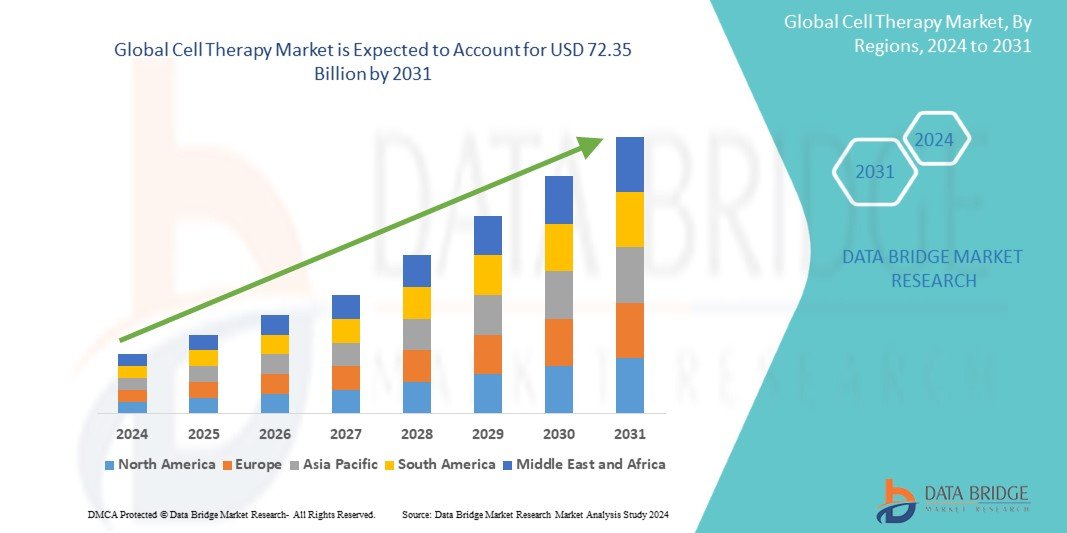Introduction
Cancer remains one of the most formidable challenges in modern medicine, claiming millions of lives globally each year. Traditional treatment modalities such as chemotherapy, radiation, and surgery have been the mainstay for decades, but they often come with severe side effects and limited effectiveness for certain types of cancer. In recent years, however, cell therapy has emerged as a groundbreaking approach, offering new hope to patients and healthcare providers alike.
Definition
Cell therapy is a medical technique that replaces or repairs the body’s damaged tissues and cells using live cells. Targeting certain illnesses or disorders, this novel strategy can make use of a variety of cell types, such as immune cells, differentiated cells, and stem cells. By repairing tissues, modifying immune responses, or eliminating cancer cells directly, cell therapy seeks to return the body to normal. It is a fundamental element of regenerative medicine and has demonstrated potential in the treatment of several ailments, such as degenerative illnesses, genetic disorders, and malignancies. Cell therapy is becoming more and more effective and applicable in therapeutic settings thanks to technological and research advancements.
Understanding Cell Therapy
Cell therapy, particularly in the context of cancer treatment, involves the use of living cells to treat or prevent disease. The most prominent form of cell therapy in oncology is CAR T-cell therapy (Chimeric Antigen Receptor T-cell therapy), where a patient’s T cells are genetically engineered to better recognize and attack cancer cells. Another form is stem cell therapy, where hematopoietic stem cells are used to restore the bone marrow after aggressive treatments like chemotherapy.
Breakthroughs in Cell Therapy
1. CAR T-Cell Therapy
CAR T-cell therapy has gained significant attention and has been approved for certain hematologic cancers, such as acute lymphoblastic leukemia (ALL) and large B-cell lymphoma. In this therapy, T cells are extracted from a patient’s blood and modified to express a CAR that targets specific antigens on cancer cells. After a brief period of expansion in the laboratory, these modified T cells are infused back into the patient, where they can recognize and destroy cancer cells.
2. Natural Killer (NK) Cell Therapy
Natural killer (NK) cell therapy is another promising avenue in cell therapy for cancer treatment. Unlike T cells, which require specific antigen recognition, NK cells can recognize and kill a broader range of cancer cells without prior sensitization. Scientists are working on methods to increase the effectiveness of NK cells, such as employing donor-derived modified NK cells or growing them from the patient’s blood.
3. Stem Cell Transplants
Hematopoietic stem cell transplantation (HSCT) remains a critical treatment for various blood cancers. This procedure allows for the replacement of diseased bone marrow with healthy stem cells, either from the patient (autologous transplant) or from a donor (allogeneic transplant). The introduction of new conditioning regimens and improved supportive care has led to better outcomes and fewer complications in transplant recipients.
4. Combination Therapies
Combining cell therapies with other treatment modalities, such as immunotherapy and targeted therapies, is a growing area of research. For instance, studies are investigating the synergistic effects of combining CAR T-cell therapy with immune checkpoint inhibitors, which could enhance the immune response against cancer.
Challenges in Cell Therapy
Despite the promising advancements, several challenges must be overcome for cell therapy to be widely adopted and effective.
1. Limited Availability and High Costs
One of the most significant barriers to the widespread use of cell therapy is the cost associated with manufacturing and administering these therapies. The personalized nature of CAR T-cell therapy requires significant resources, leading to treatment costs that can exceed hundreds of thousands of dollars per patient. This high price tag limits access for many patients and creates disparities in treatment availability.
2. Safety Concerns
While cell therapies can be highly effective, they also carry risks. Severe side effects, such as cytokine release syndrome (CRS) and neurotoxicity, have been associated with CAR T-cell therapy. Managing these side effects can be challenging, requiring close monitoring and supportive care. As researchers continue to refine these therapies, ensuring patient safety while maintaining efficacy remains a top priority.
3. Tumor Heterogeneity
Cancer is characterized by its heterogeneity, meaning that not all cancer cells within a tumor are the same. This diversity can lead to challenges in the effectiveness of cell therapies. Tumors may express different antigens, making it difficult for engineered T cells or NK cells to recognize and eliminate all cancer cells. Overcoming tumor heterogeneity will require innovative strategies, such as the development of universal CARs or multi-targeting approaches.
4. Regulatory and Manufacturing Challenges
The complexity of developing cell therapies presents regulatory hurdles. The processes for manufacturing, testing, and approving these therapies are intricate and time-consuming. Cell therapy safety and efficacy depend on standardizing production procedures and guaranteeing constant quality control. Furthermore, regulatory bodies must establish clear guidelines to facilitate the approval of new therapies while ensuring patient safety.
5. Long-Term Effects and Durability
Understanding the long-term effects of cell therapies is critical. While many patients achieve remission, the durability of these responses can vary. Ongoing research is needed to determine the best strategies for monitoring patients post-treatment and for addressing any relapses that may occur.
Growth Rate of Cell Therapy Market
The size of the global cell therapy market was estimated at USD 17.75 billion in 2023 and is expected to grow at a compound annual growth rate (CAGR) of 19.20% from 2024 to 2031, reaching USD 72.35 billion.
Learn More: https://www.databridgemarketresearch.com/reports/global-cell-therapy-market
Conclusion
Cell therapy represents a paradigm shift in cancer treatment, offering new hope to patients facing aggressive and resistant forms of the disease. With significant breakthroughs, particularly in CAR T-cell therapy and NK cell therapy, there is growing optimism about the future of oncology. However, addressing the challenges of cost, safety, tumor heterogeneity, regulatory hurdles, and long-term effects is essential to fully realize the potential of these innovative therapies.





